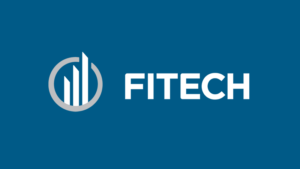New scene. New strategies.
A few months ago, things were different. Real different. The majority of your teams likely consisted of non-traveling, static roles—at desktops. And securing your organization’s data, while always a priority, wasn’t nearly as complicated or fluid an ordeal.
Now, entire departments are remote—rendering others completely obsolete. Employees work from anywhere, anytime, often from multiple devices. While for the sake of agility and business continuity, you may have overridden certain security precautions at the start of the pandemic (e.g. allowing employees the flexibility to work from their own devices), COVID’s lingering presence requires a closer look at those business policies and security measures—especially concerning the continued protection of intellectual property (IP).
4 solutions for protecting your intellectual property
1) Private cloud
In order to monitor where, and how, data is removed, you need to maintain administrator controls over all information. Store data in a fully encrypted private cloud, such as FTHosting Private Cloud, or various other private encrypted clouds that allow alternative levels of security. A private cloud consists of computing resources used exclusively by one business or organization. The private cloud can be physically located at your organization’s on-site datacenter, or it can be hosted by a third-party service provider. In a private cloud, services and infrastructure are always maintained on a private network and the hardware and software are dedicated solely to your organization. By having your base network and valuable data here, you can fully understand where information is, and who has access to it (even via a bring-your-own-device platform).
2) Data Loss Protection (DLP)
Data loss prevention (DLP), consists of technology that inspects and analyzes data sent via messaging applications, in motion over the network, in use on a managed endpoint device, and at rest in on-premises file servers or in cloud applications and cloud storage. DLP responds based on policy and rules defined to address the risk of inadvertent or accidental leaks, or exposure of sensitive data outside authorized channels. In short, DLP enables you to control and understand how employees are moving data off of your system—thanks to recorded logs. Whether someone copies a file from your system to their personal laptop, or sticks a USB drive into their work computer, DLP ensures you have a history of it, and can set specific restrictions to prevent employees from removing data altogether.
3) Keystroke Logging
This elevated form of DLP tracks and watches the keystrokes and mousing of your end users. See everything that happens on your employees’ computers by capturing screenshots and logging all keystrokes and passwords typed, as well as remotely monitor users via activity log reports of all keystrokes via email.
4) Mobile Device Management (MDM)
Put simply, MDM is the mobile-device version of data loss protection. Usually a combination of on-device applications and configurations, corporate policies and certificates, and back-end infrastructure, MDM can simplify and improve the IT management of your end users’ devices. MDM is ideal for increasing device supportability, security, and corporate functionality, while maintaining some user flexibility.
Given our new normal, it’s never been more important to protect your IP. Ensuring you’re best equipped to flex and innovate—while still protecting your business—is paramount to continued success, especially during uncertain times.
CTA: Wondering which security solution makes the most sense for your organization’s IP?


